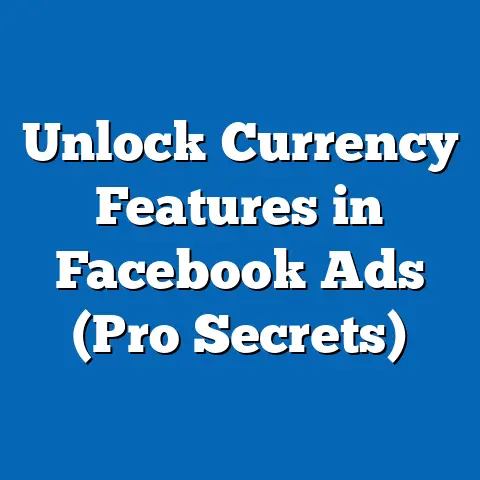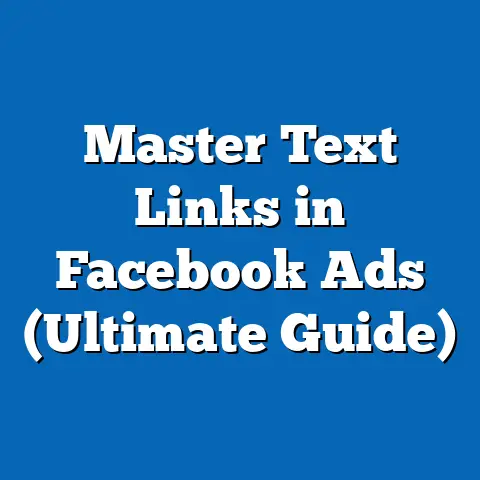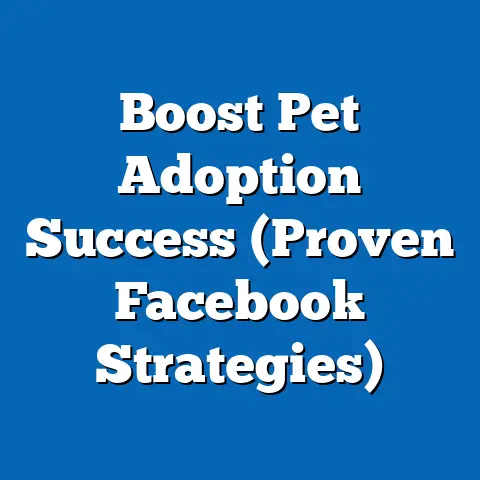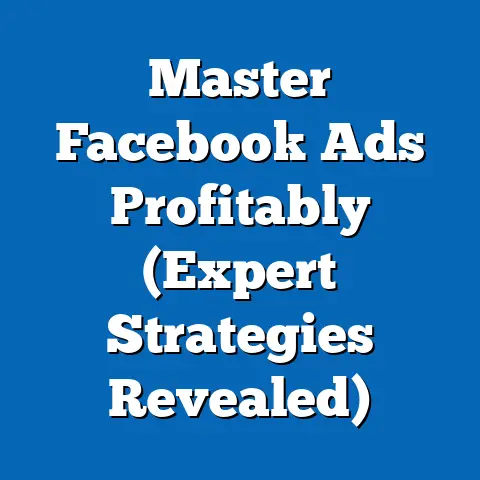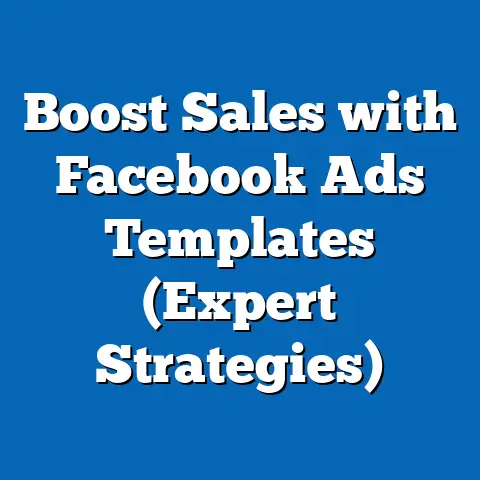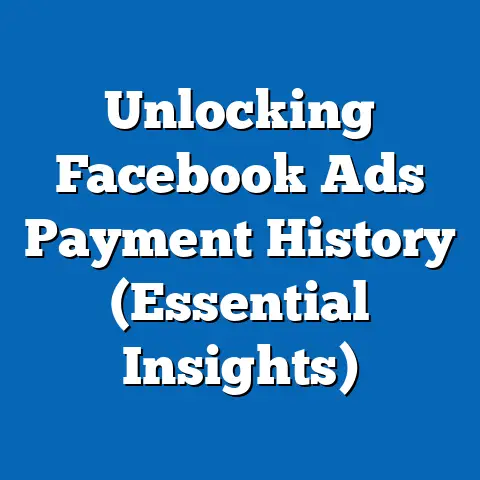Boost Facebook Ads: Lower Cost Per Purchase (Expert Secrets)
Have you ever wondered how some businesses seem to effortlessly reel in customers through Facebook Ads, while others struggle to stay afloat in a sea of rising advertising costs? It’s a question I’ve pondered countless times throughout my years in digital marketing. Think of it like choosing the right material for a raincoat. You could go with something flimsy, only to find yourself soaked in the first drizzle. Or, you could invest in a high-quality, waterproof fabric that keeps you dry and comfortable, no matter the downpour. Similarly, in the world of Facebook Ads, a well-thought-out strategy is your waterproof shield, protecting you from wasted ad spend and ensuring a steady stream of conversions.
Just as waterproof materials are designed to withstand various conditions, effective Facebook ad strategies can help businesses navigate the unpredictable waters of digital marketing. It’s about building a robust strategy that keeps costs low while achieving high conversion rates. I remember working with a small e-commerce business that was pouring money into Facebook Ads with little to show for it. Their cost per purchase was through the roof, and they were on the verge of giving up. After diving deep into their campaigns and implementing some of the strategies I’ll share with you today, we were able to drastically reduce their CPP and turn their struggling ads into a profitable revenue stream.
In this article, I’m going to pull back the curtain and reveal the expert secrets to lowering your Cost Per Purchase (CPP) on Facebook Ads. We’ll explore everything from laser-focused audience targeting to crafting irresistible ad creatives and leveraging the power of retargeting. Get ready to transform your Facebook Ads from a cost center into a profit-generating machine!
Understanding Cost Per Purchase (CPP)
Before we dive into the nitty-gritty strategies, let’s make sure we’re all on the same page about what Cost Per Purchase (CPP) actually means. Simply put, CPP is the total amount of money you spend on your Facebook Ads divided by the number of purchases you generate as a result of those ads.
CPP = Total Ad Spend / Number of Purchases
Why is this metric so crucial? Because it directly reflects the efficiency of your ad spend. A lower CPP means you’re getting more bang for your buck, acquiring customers at a more sustainable and profitable rate. A high CPP, on the other hand, indicates that your ads aren’t resonating with your target audience, your targeting is off, or your landing page isn’t optimized for conversions.
Understanding your CPP is essential for scaling your ad campaigns effectively. It allows you to identify which campaigns are performing well and which ones need tweaking. It also helps you make informed decisions about budget allocation, ensuring that you’re investing your money in the areas that are generating the highest return.
I’ve seen businesses completely transform their marketing performance simply by paying closer attention to their CPP. It’s not just about driving traffic; it’s about driving qualified traffic that converts into paying customers.
Key Takeaway: CPP is a vital metric for measuring the efficiency of your Facebook Ads. Understanding and monitoring your CPP is the first step towards optimizing your campaigns for maximum profitability.
One of the biggest mistakes I see businesses make with their Facebook Ads is failing to properly identify their target audience. It’s like casting a wide net in the ocean and hoping to catch a specific type of fish. You might catch something, but it’s likely to be a lot of unwanted bycatch.The key to lowering your CPP is to narrow your focus and target the people who are most likely to be interested in your products or services. Facebook offers a wealth of targeting options, allowing you to get incredibly specific with your audience.
Here’s a breakdown of some of the most effective targeting options:
- Demographics: This includes basic information like age, gender, location, education level, and job title. While it might seem obvious, making sure your ads are reaching the right demographic is a fundamental step.
- Interests: This allows you to target people based on their interests, hobbies, and passions. Facebook gathers this information from the pages people like, the groups they join, and the topics they engage with.
- Behaviors: This targeting option is based on people’s online and offline behaviors, such as purchase history, device usage, and travel habits. This can be incredibly powerful for reaching people who are actively looking for products or services like yours.
- Custom Audiences: This is where things get really interesting. Custom Audiences allow you to upload your own data (like email lists or website visitors) and target those specific people on Facebook. You can also create Lookalike Audiences, which are people who share similar characteristics and behaviors with your existing customers.
The Importance of Buyer Personas:
Before you start setting up your targeting options, it’s crucial to create detailed buyer personas. A buyer persona is a fictional representation of your ideal customer, based on research and data about your existing customers.
Think about their age, gender, location, income level, interests, pain points, and goals. The more detailed your buyer personas, the better you’ll be able to craft ads that resonate with them and drive conversions.
I always tell my clients to think of their buyer personas as real people. Give them a name, a face, and a backstory. This will help you humanize your target audience and make more informed decisions about your ad targeting.
Using Facebook’s Audience Insights Tool:
Facebook’s Audience Insights tool is a goldmine of information for audience research. It allows you to explore the demographics, interests, and behaviors of people on Facebook, helping you identify potential target audiences for your ads.
You can use Audience Insights to:
- Discover new interests and behaviors that are relevant to your target audience.
- Identify the top pages and categories that your target audience likes.
- Understand the demographics and location of your target audience.
I’ve used Audience Insights to uncover hidden interests and behaviors that I never would have thought of on my own. It’s a powerful tool for expanding your reach and finding new customers.
Key Takeaway: Laser-focused audience targeting is essential for lowering your CPP. By creating detailed buyer personas and leveraging Facebook’s targeting options, you can reach the people who are most likely to convert into paying customers.
Crafting Compelling Ad Creatives
You’ve identified your target audience, now what? Now it’s time to create ad creatives that grab their attention and compel them to take action. Think of your ad creative as the first impression you make on a potential customer. It needs to be visually appealing, informative, and persuasive.
Here are some key elements of compelling ad creatives:
- High-Quality Visuals: Use eye-catching images or videos that are relevant to your product or service. Make sure your visuals are high-resolution and professionally designed.
- Persuasive Copy: Write clear, concise, and compelling copy that highlights the benefits of your product or service. Focus on solving your target audience’s pain points and addressing their needs.
- Strong Calls-to-Action (CTAs): Tell people exactly what you want them to do. Use strong action verbs like “Shop Now,” “Learn More,” or “Get Started.” Make your CTAs prominent and easy to find.
Examples of Successful Ad Creatives:
I’ve seen countless examples of ad creatives that have led to lower CPP. Here are a few common themes:
- User-Generated Content: Featuring real customers using your product or service can be incredibly effective. It adds social proof and builds trust.
- Before-and-After Photos: If you’re selling a product that delivers visible results, before-and-after photos can be a powerful way to showcase its effectiveness.
- Video Demos: Short, engaging video demos can quickly explain the benefits of your product or service and demonstrate how it works.
A/B Testing Your Creatives:
Don’t just assume that your first ad creative is going to be a home run. It’s crucial to A/B test different variations of your ads to see which ones perform best.
A/B testing involves creating two or more versions of your ad with slight variations (like different headlines, images, or CTAs) and running them simultaneously to see which one generates the highest conversion rate.
I recommend testing one element at a time to isolate the impact of each change. For example, you might test two different headlines with the same image to see which one resonates better with your audience.
Key Takeaway: Compelling ad creatives are essential for driving conversions and lowering your CPP. Use high-quality visuals, persuasive copy, and strong CTAs to grab your audience’s attention and compel them to take action. Don’t forget to A/B test different variations of your ads to optimize your performance.
Optimizing Ad Campaigns
Creating great ad creatives and targeting the right audience is only half the battle. You also need to continuously optimize your ad campaigns to ensure you’re getting the best possible return on your investment.
Here are some key strategies for optimizing your ad campaigns:
- Budget Allocation: Distribute your budget across your best-performing campaigns and ad sets. Don’t be afraid to cut funding for campaigns that aren’t delivering results.
- Bidding Strategies: Experiment with different bidding strategies to find the one that works best for your goals. Facebook offers a variety of bidding options, including cost per click (CPC), cost per impression (CPM), and cost per acquisition (CPA).
- Ad Placements: Test different ad placements to see where your ads perform best. Facebook offers a variety of placements, including the Facebook News Feed, Instagram Feed, Audience Network, and Messenger.
Monitoring Ad Performance Metrics:
Regularly monitor your ad performance metrics to identify areas for improvement. Key metrics to track include:
- Cost Per Purchase (CPP): As we discussed earlier, this is the most important metric for measuring the efficiency of your ad spend.
- Click-Through Rate (CTR): This measures the percentage of people who click on your ad after seeing it. A high CTR indicates that your ad is resonating with your audience.
- Conversion Rate: This measures the percentage of people who complete a desired action (like making a purchase) after clicking on your ad.
- Relevance Score: This is a score that Facebook assigns to your ad based on its relevance to your target audience. A higher relevance score can lead to lower ad costs.
Data-Driven Decisions:
The key to successful ad optimization is making data-driven decisions. Don’t rely on gut feelings or assumptions. Instead, use the data from your ad performance metrics to guide your decisions.
For example, if you notice that a particular ad set has a low CTR, you might try changing the ad creative or refining your targeting. If you see that a particular ad placement is performing poorly, you might consider removing it from your campaign.
Case Studies:
I’ve worked with numerous businesses that have successfully optimized their ads to reduce CPP. One example that stands out is a local restaurant that was struggling to attract new customers.
After analyzing their ad performance metrics, we discovered that their ads were performing poorly on mobile devices. We decided to create a separate ad set specifically for mobile users with a simplified ad creative and a mobile-friendly landing page.
As a result, their CPP decreased by 30% and they saw a significant increase in new customers.
Key Takeaway: Continuously optimizing your ad campaigns is crucial for lowering your CPP. By monitoring your ad performance metrics and making data-driven decisions, you can ensure you’re getting the best possible return on your investment.
Leveraging Retargeting Strategies
Now, let’s talk about one of the most powerful strategies for lowering your CPP: retargeting. Retargeting involves showing ads to people who have already interacted with your brand in some way, such as visiting your website, watching a video, or engaging with your social media content.
Why is retargeting so effective? Because these people are already familiar with your brand and are more likely to be interested in your products or services. They’ve shown some level of interest, so they’re warmer leads than someone who’s never heard of you before.
Think of it like this: imagine you’re browsing an online store and you add a product to your cart but don’t complete the purchase. A few days later, you start seeing ads for that same product on Facebook. This is retargeting in action.
By showing you ads for the product you almost bought, the store is reminding you of your interest and giving you another chance to complete the purchase.
Setting Up Retargeting Campaigns:
Setting up retargeting campaigns on Facebook is relatively straightforward. You can create custom audiences based on various criteria, such as:
- Website Visitors: Target people who have visited specific pages on your website.
- Video Viewers: Target people who have watched a certain percentage of your videos.
- Lead Forms: Target people who have filled out a lead form on your website or Facebook.
- App Users: Target people who have downloaded and used your mobile app.
Audience Segmentation:
For optimal results, it’s important to segment your retargeting audiences. For example, you might create separate audiences for people who visited your product pages versus people who visited your blog.
This allows you to tailor your ad creatives to the specific interests of each audience segment. For example, you might show ads for specific products to people who visited your product pages, while showing ads for helpful blog posts to people who visited your blog.
Ad Creative Considerations:
Your ad creatives for retargeting campaigns should be different from your ads for cold audiences. Focus on reminding people of their previous interest in your brand and highlighting the benefits of your products or services.
You might also consider offering a special discount or promotion to incentivize them to complete a purchase.
Success Stories:
I’ve seen businesses achieve incredible results with retargeting campaigns. One example that comes to mind is an online clothing retailer that was struggling with abandoned carts.
We set up a retargeting campaign that showed ads to people who had added items to their cart but didn’t complete the purchase. The ads featured images of the items they had added to their cart, along with a special discount code.
As a result, they saw a 20% increase in completed purchases and a significant decrease in their CPP.
Key Takeaway: Retargeting is a powerful strategy for lowering your CPP by targeting people who have already shown interest in your brand. Segment your audiences, tailor your ad creatives, and consider offering special promotions to maximize your results.
Conclusion
Lowering your Cost Per Purchase on Facebook Ads is not an impossible feat. It requires a strategic approach that combines laser-focused audience targeting, compelling ad creatives, continuous campaign optimization, and effective retargeting.
Think of it as building a well-oiled machine. Each component plays a crucial role in driving conversions and maximizing your return on investment.
By implementing the expert secrets I’ve shared in this article, you can transform your Facebook Ads from a cost center into a profit-generating machine. Remember to continuously monitor your ad performance metrics, make data-driven decisions, and adapt your strategies as needed.
Now, I want to hear from you! What are some of your biggest challenges with Facebook Ads? What strategies have you found to be most effective for lowering your CPP? Share your experiences and questions in the comments section below. Let’s learn from each other and build a community of successful Facebook advertisers!

